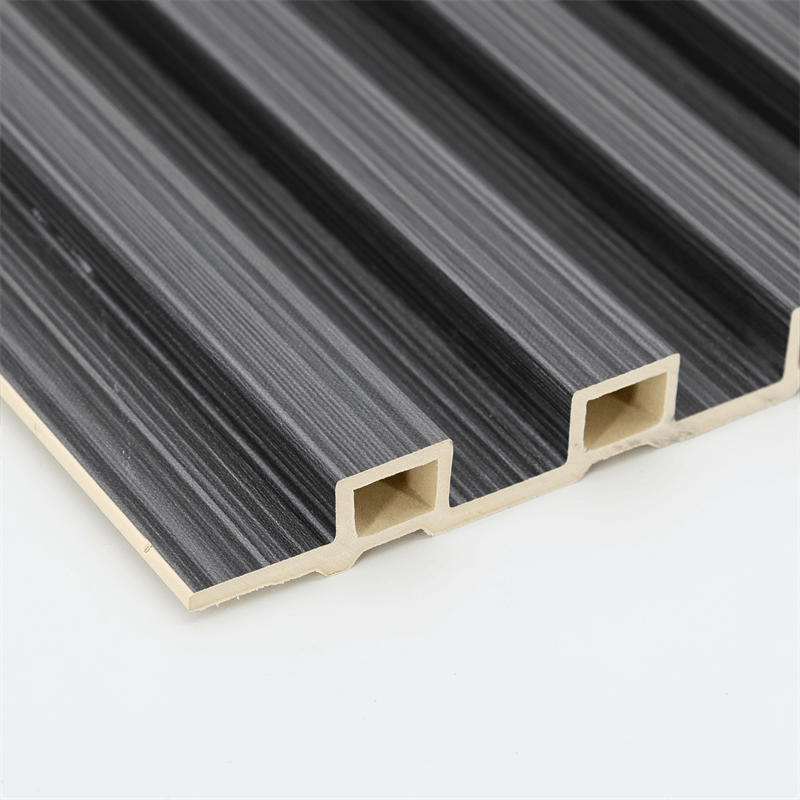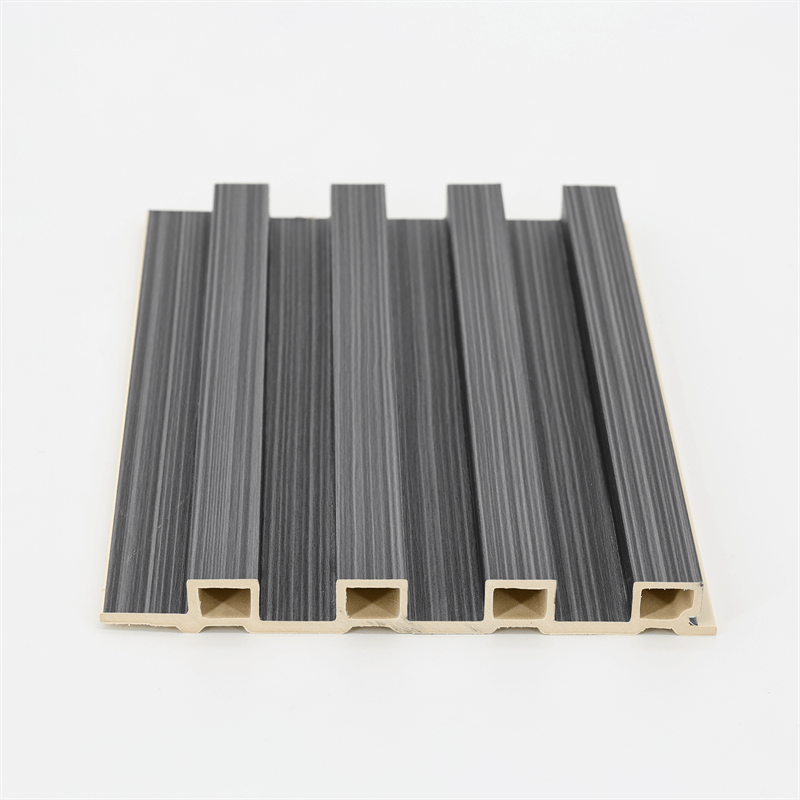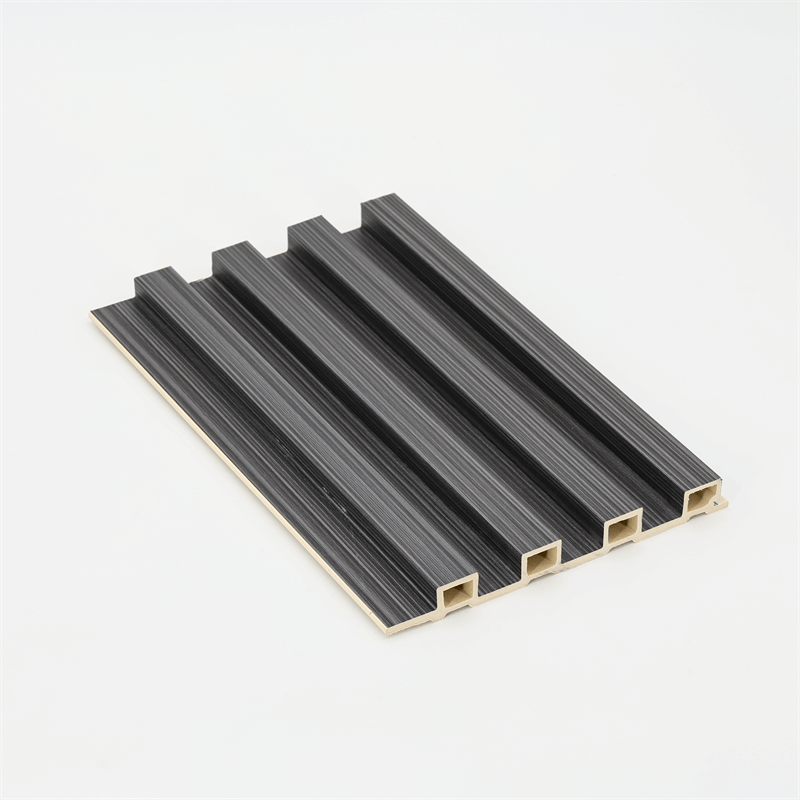In high-traffic areas such as commercial buildings, shopping malls, and educational institutions, it is crucial to choose wall panels that can withstand constant wear and tear while maintaining their aesthetic appeal.
Wood-plastic composite (WPC) wall panels have gained popularity in recent years due to their remarkable durability, versatility, and sustainability.
This essay explores why WPC wall panels are the ideal choice for high-traffic areas, considering their resistance to damage, ease of maintenance, design options, and eco-friendly characteristics.
I. Superior Resistance to Damage
WPC wall panels are engineered to be highly resistant to various types of damage, making them suitable for high-traffic areas.
Firstly, their composite structure makes them highly resistant to moisture, preventing swelling, warping, or rotting that can occur in traditional wood panels.
This ensures their longevity and reduces the need for frequent repairs or replacements.
Additionally, the plastic component in WPC panels provides a protective layer, making them highly resistant to impact, scratches, and abrasion.
This characteristic enables the panels to withstand accidental bumps, knocks, and scratches that commonly occur in bustling spaces.
As a result, WPC wall panels maintain their pristine appearance even after extended use, ensuring a visually appealing environment for occupants.
High-traffic areas often face exposure to moisture, whether from spills, cleaning procedures, or environmental factors.
WPC wall panels exhibit excellent resistance to moisture, as the plastic component in the composite material acts as a protective barrier against water absorption.
This inherent moisture resistance prevents the panels from swelling, warping, or rotting, which are common issues with traditional wood-based panels.
Furthermore, WPC panels offer remarkable impact resistance, making them ideal for areas prone to accidental bumps, scratches, or impacts.
Their sturdy construction allows them to withstand such incidents without sustaining visible damage, ensuring a long-lasting appearance.
II. Easy Maintenance and Cleaning
Maintaining cleanliness in high-traffic areas can be challenging. However, WPC wall panels offer a distinct advantage in terms of maintenance.
Unlike traditional wood panels that require regular sanding, staining, and sealing, WPC panels are virtually maintenance-free.
Their smooth surface allows for effortless removal of dirt, stains, and graffiti, eliminating the need for harsh chemicals or specialized cleaning agents.
A simple cleaning routine with mild soap and water is sufficient to restore the panels’ original beauty.
The low-maintenance nature of WPC panels not only saves time and effort but also reduces maintenance costs over the long term, making them an economical choice for high-traffic areas.
In busy environments, ease of maintenance is essential to ensure the longevity and aesthetics of wall panels.
WPC wall panels require minimal upkeep, making them highly convenient for high-traffic areas.
Unlike natural wood, WPC panels do not require regular painting, staining, or sealing to maintain their appearance.
They can be easily cleaned with mild detergents and water, eliminating the need for specialized cleaning products.
The smooth surface of WPC panels resists the accumulation of dirt, dust, and stains, simplifying the cleaning process and saving valuable time and effort.
This low-maintenance characteristic of WPC panels makes them an efficient and cost-effective choice for high-traffic areas where frequent cleaning is necessary.
III. Wide Range of Design Options
Another significant advantage of WPC wall panels is the wide range of design options they offer, allowing designers and architects to create visually appealing spaces that suit the ambiance of high-traffic areas.
WPC panels are available in various colors, textures, and finishes, providing a plethora of choices to cater to different design preferences.
The panels can be selected to seamlessly blend with existing architectural elements or provide a contemporary contrast, enhancing the overall aesthetic appeal of the space.
Furthermore, WPC panels can be easily customized, allowing for unique designs, patterns, and even branded elements.
This versatility empowers designers to create engaging and visually striking environments that leave a lasting impression on visitors.
Apart from their functional benefits, WPC wall panels offer a wide range of design options, allowing for creative and visually appealing interior and exterior spaces.
The manufacturing process of WPC panels enables the incorporation of various colors, textures, and finishes, providing designers and architects with abundant choices to suit the specific aesthetics of high-traffic areas. Whether a space requires a contemporary, rustic, or traditional look, WPC panels can be customized to fulfill diverse design preferences.
Furthermore, the panels can be easily cut, shaped, and installed, facilitating seamless integration into existing architectural elements.
This versatility allows for the creation of unique and eye-catching designs that enhance the overall atmosphere of high-traffic areas.
IV. Eco-Friendly Characteristics
As sustainability becomes increasingly important in construction and design, WPC wall panels stand out as an environmentally friendly choice.
WPC panels are primarily composed of recycled wood fibers and plastic, reducing the demand for virgin materials and minimizing the strain on natural resources.
By utilizing recycled materials, WPC panels contribute to the reduction of waste and the conservation of forests.
Additionally, the manufacturing process of WPC panels consumes less energy compared to the production of traditional wood panels, further reducing the environmental impact.
Opting for WPC wall panels for high-traffic areas showcases a commitment to sustainable practices, aligning with green building principles and regulations.
WPC wall panels are renowned for their exceptional durability, making them highly suitable for high-traffic areas.
The combination of wood fibers and plastic polymers in WPC creates a composite material that possesses superior strength and structural integrity.
This enables the panels to withstand heavy usage, including impacts, abrasions, and general wear and tear.

Unlike traditional wood panels, WPC panels do not warp, crack, or splinter, ensuring longevity even in busy environments.
Additionally, the incorporation of additives in the manufacturing process enhances the panels’ resistance to UV radiation, preventing fading and discoloration over time.
In high-traffic areas, where durability, maintenance, design, and sustainability are key considerations, WPC wall panels emerge as the perfect choice.
Their superior resistance to damage, easy maintenance, wide range of design options, and eco-friendly characteristics make them an ideal solution for bustling spaces.
WPC wall panels offer numerous advantages that make them the perfect choice for high-traffic areas.
Their durability ensures long-lasting performance in demanding environments, while their resistance to moisture and impact preserves their appearance and structural integrity.
The easy maintenance requirements of WPC panels simplify cleaning procedures, reducing maintenance costs and efforts.
Additionally, the design versatility of WPC panels allows for the creation of visually appealing spaces that align with specific design preferences.
By selecting WPC wall panels, designers and architects can create visually appealing environments that withstand the rigors of high-traffic while contributing to a more sustainable future.
The combination of durability, aesthetics, and eco-consciousness makes WPC wall panels the optimal choice for transforming high-traffic areas into functional, attractive, and environmentally responsible spaces.


